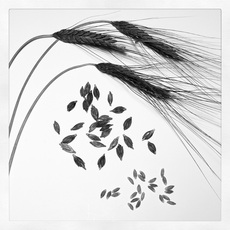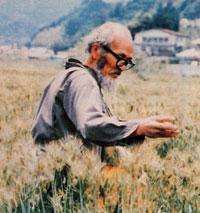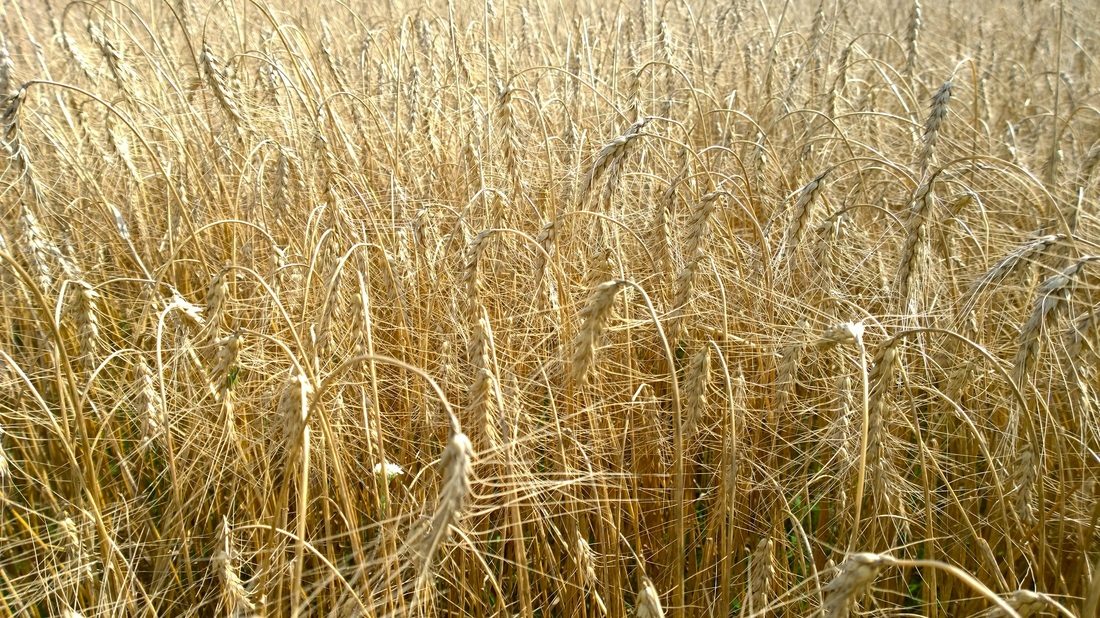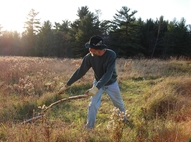 Black Winter Emmer Black Winter Emmer Ever wonder how to get the hulls off of your homegrown Einkorn and Emmer, so you can eat them? I have heard of this solution, but I haven't tried it yet. Here is a video on YouTube of a simple way to do it. At 1:00, notice that a thick, flat rubber ring has been mounted over the main steel plate of a Corona or Porkert grain mill. The other steel plate is left bare. The grain heads are cut off the stems, and then run through the grinder. The plates need to be adjusted for firm, but not crushing pressure. As you turn the crank, the metal teeth of the steel plate, rubs the hulled grain against the rubber plate, and the friction rubs the hulls apart. Then the grain is separated from the chaff, by winnowing it in the wind. On an even smaller scale, you can use the ancient method of toasting the hulls in a frying pan until very dry, then crushing the hulls with a mortar and pestle, and then winnow in the wind to separate the grain from the chaff. - Botan Anderson
2 Comments
 Yes, the "One Scythe Revolution" is an allusion, in part, to Masanobu Fukuoka's classic The One-Straw Revolution. Back in 1984, I attended a conference with Frances Moore Lappe, and this documentary was shown there. Up until then, my life's ambition had been to be an artist. After seeing this documentary, I was inspired to take a little detour, and become a Natural Farmer, and then do my art in all my free time, once Nature started doing most of the work. This turned out to be harder than it looks! I'm still working at it, but I think that the scythe could make Natural Farming work here in temperate climates. I hope to be writing more about that in future posts. July 14th at UMass Farm, South Deerfield, Mass. - Growing Local Grains July 15th at Colrain Seed Farm, Colrain, Mass. - Community Grain Festival See www.growseed.org for details.  Modern wheat varieties have been developed for ease of growing and harvesting on a vast scale with machines, for disease-resistance in huge monocultures, and high gluten content for commercial bread baking. As with fruits and vegetables, flavor and nutrition have become a more minor consideration. If you are going to go to all the work of raising small grains by hand, you might want to consider getting involved with raising, and preserving, ancient and heritage varieties of grain, that were developed during the eras when they were grown on a small scale, and harvested by hand. There may be a wisdom to their development, that is lost at a modern machine scale. For example, very tall winter varieties can out-compete the weeds more easily. Also growing, and harvesting small-grains by hand, is an awful lot of work for something that you can easily buy in bulk at a natural foods co-op. A better niche for the scythe user, would be to grow rare heritage varieties, that you can't buy anywhere else. You can help preserve them for the future, and also adapt them to your bio-region. Start with a variety of different grains in garden-sized plots, and see what does well in your area. Save the seed of what grows, and tastes the best, to sow larger areas the next year. |
Botan AndersonArchives
March 2023
Categories
All
|


 RSS Feed
RSS Feed